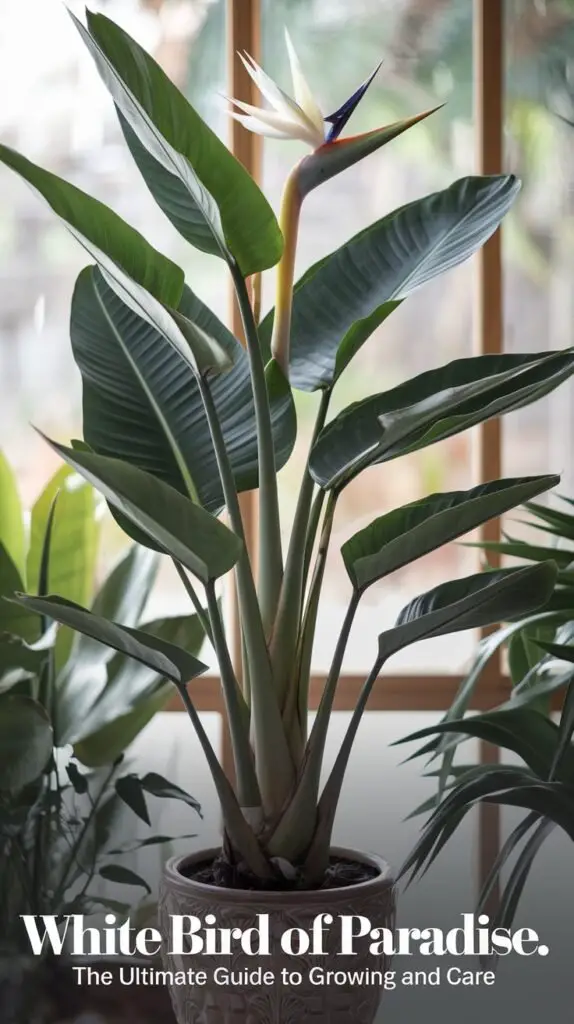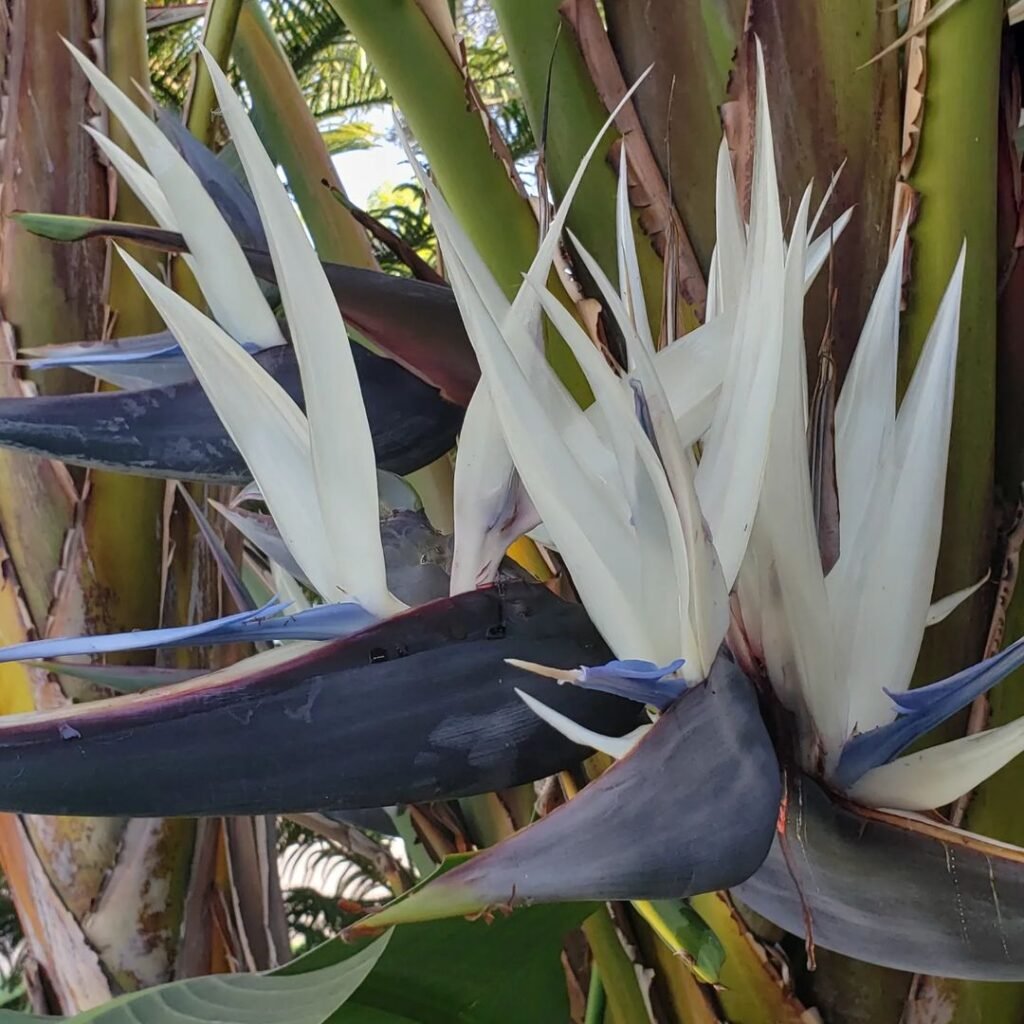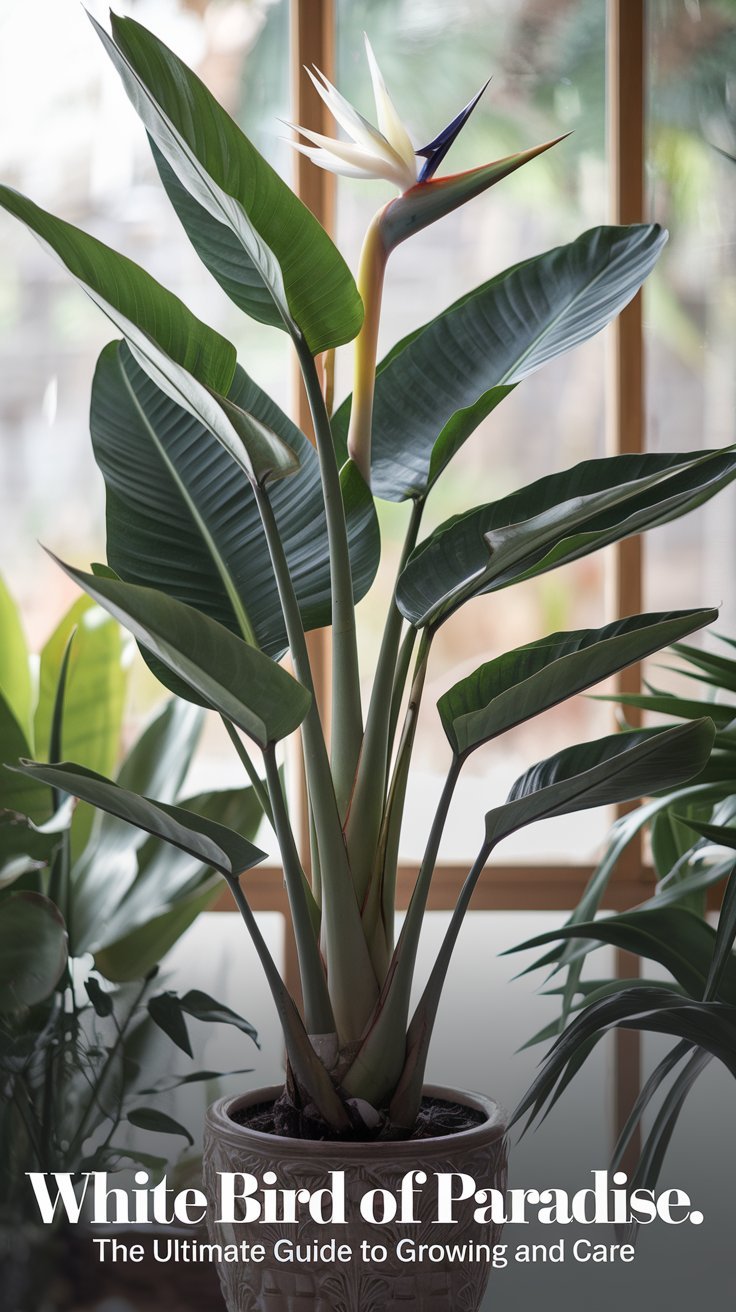Discover the secrets to growing and caring for the majestic White Bird of Paradise plant. Learn about its unique features, optimal growing conditions and expert tips for 2024. Perfect for both novice and experienced plant enthusiasts!
The White Bird of Paradise (Strelitzia nicolai) is a stunning, architectural plant that brings a touch of tropical elegance to any space. With its large, banana-like leaves and dramatic white flowers, this plant has become increasingly popular among indoor gardeners and landscape designers alike. This comprehensive guide will explore everything you need to know about growing and caring for the White Bird of Paradise in 2024.
As a tropical plant expert with over two decades of experience cultivating exotic species, I’m excited to share my knowledge on this magnificent plant. Let’s dive into the world of the White Bird of Paradise and discover how to help it thrive in your home or garden!
Understanding the White Bird of Paradise

Botanical Overview
Scientific Name: Strelitzia nicolai Common Names: White Bird of Paradise, Giant Bird of Paradise, Wild Banana Family: Strelitziaceae
Native Habitat: Coastal areas of South Africa
2024 Insight: Recent genetic studies are shedding new light on the evolutionary relationship between white and orange bird of paradise species.
Fun Fact: Despite its common name, the White Bird of Paradise is not closely related to true banana plants.
Distinctive Features
- Leaves: Large, paddle-shaped leaves that can grow up to 6-8 feet long
- Flowers: White, bird-like flowers with blue tongues
- Height: Can grow up to 20-30 feet tall in optimal conditions
- Growth Habit: Clumping, with a palm-like appearance
Growing White Bird of Paradise

Light Requirements
Optimal Conditions: Bright, indirect light Tolerance: Can adapt to full sun in temperate climates
2024 Trend: Smart grow lights with spectrum control are becoming popular for optimizing indoor growth.
Pro Tip: If growing indoors, rotate the plant regularly to ensure even growth.
Temperature and Humidity
Ideal Temperature Range: 65-80°F (18-27°C) Humidity Preferences: High humidity (50-70%)
2024 Update: Climate-controlled plant cabinets are gaining popularity for maintaining optimal conditions.
Pro Tip: Use a pebble tray or humidifier to increase humidity in dry indoor environments.
Soil and Potting
Soil Type: Well-draining, rich potting mix pH Range: 6.0-7.5
2024 Innovation: Sustainable, coco coir-based potting mixes are becoming the eco-friendly choice for tropical plants.
Pro Tip: Add orchid bark or perlite to improve drainage in heavy soils.
Watering
Frequency: Keep soil consistently moist but not waterlogged Technique: Water thoroughly, allowing excess to drain
2024 Trend: Self-watering planters with moisture sensors are simplifying care for large houseplants.
Pro Tip: Reduce watering in winter when growth slows.
Fertilizing
Frequency: Monthly during growing season (spring and summer) Type: Balanced, water-soluble fertilizer (10-10-10)
2024 Research: Studies are exploring the benefits of mycorrhizal fungi supplements for tropical plants.
Pro Tip: Flush the soil every few months to prevent salt buildup from fertilizers.
Care and Maintenance
Pruning and Cleaning
Pruning: Remove dead or yellowing leaves at the base Cleaning: Wipe leaves regularly to remove dust and pests
2024 Trend: Plant-safe, probiotic cleaning solutions are gaining popularity for maintaining leaf health.
Pro Tip: Use sharp, sterilized pruning shears to prevent disease transmission.
Repotting
Frequency: Every 2-3 years or when rootbound Best Time: Spring, before the growing season begins
2024 Innovation: Biodegradable “grow pots” are making repotting less stressful for plants.
Pro Tip: Choose a pot only 1-2 inches larger in diameter to prevent overwatering issues.
Pest and Disease Management
Common Pests: Spider mites, mealybugs, scale insects Diseases: Root rot, leaf spot
2024 Update: Beneficial nematodes are becoming a popular eco-friendly solution for soil-borne pests.
Pro Tip: Regularly inspect the undersides of leaves for early pest detection.
Propagation
Methods:
- Division of offshoots (pups)
- Seeds (rarely successful in home conditions)
Best Time: Spring, during repotting
2024 Trend: Tissue culture propagation is making rare varieties more accessible to home gardeners.
Pro Tip: Allow divided pups to callous for a day before replanting to prevent rot.
Decorative Uses
- Indoor Spaces: Statement plant for large, bright rooms
- Outdoor Landscaping: Tropical-themed gardens, poolside features
- Commercial Spaces: Hotels, office lobbies, shopping centers
2024 Design Trend: Vertical gardens featuring White Bird of Paradise as a focal point are gaining popularity in urban spaces.
Pro Tip: Pair with smaller tropical plants like pothos or ferns for a lush, layered look.
Environmental Benefits
- Air purification
- Humidity regulation
- Biodiversity support (in outdoor settings)
2024 Research Focus: Studies are quantifying the air purification capabilities of large-leaved tropical plants in indoor environments.
Challenges and Solutions
Challenge 1: Lack of Blooming
Cause: Insufficient light, age (plants need to be mature to bloom) Solution: Ensure bright light conditions, be patient with young plants
Challenge 2: Brown Leaf Tips
Cause: Low humidity, fluoride in water Solution: Increase humidity, use filtered water
Challenge 3: Overwatering
Cause: Poor drainage, too-frequent watering Solution: Ensure well-draining soil, allow top inch of soil to dry between waterings
Embracing Tropical Elegance
The White Bird of Paradise is more than just a plant; it’s a statement piece that brings a touch of the tropics to any space. With its impressive size and unique flowers, it’s no wonder this plant has captured the hearts of plant enthusiasts worldwide.
Remember, while the White Bird of Paradise can be a bit demanding in terms of care, the rewards of a healthy, thriving specimen are well worth the effort. Whether you’re looking to create a tropical oasis in your living room or add drama to your landscape, this magnificent plant is sure to impress.
For more information on tropical plant care and the latest horticultural research, visit resources like the International Society for Horticultural Science or your local botanical garden. Happy growing, and may your White Bird of Paradise flourish and bring tropical beauty to your space!
For more gardening tips and plant care guides, visit usagardenhub.com





One comment on “White Bird of Paradise : The Ultimate Guide to Growing and Care”